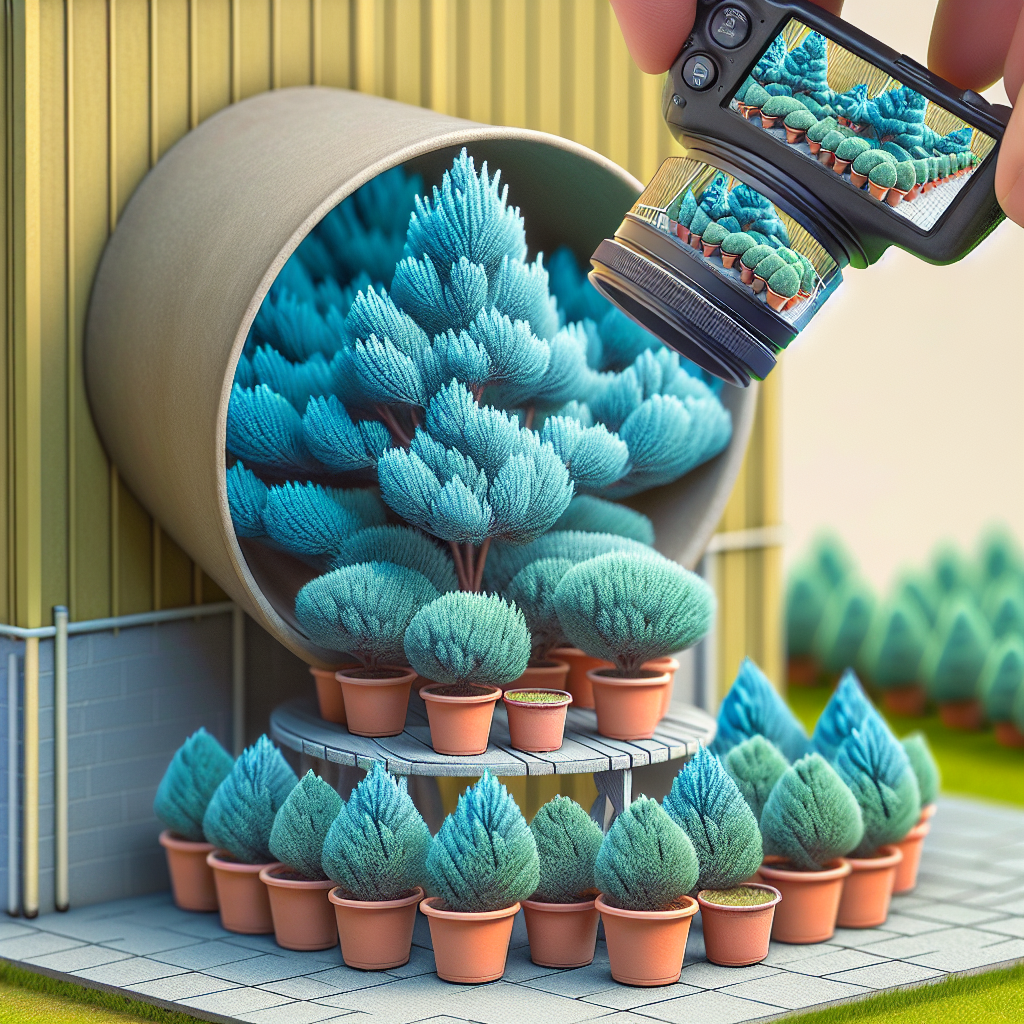Blue Point Juniper is a popular evergreen shrub that can grow up to 12 feet tall and 8 feet wide, making it an excellent choice for landscaping and creating privacy screens. However, if you have limited space or want to incorporate this beautiful plant into your patio or balcony, growing Blue Point Juniper in containers is a great option. By maximizing space and utilizing containers, you can enjoy the beauty of these plants without worrying about their size or spreading roots.
Choosing the Right Container
When growing Blue Point Juniper in containers, it’s crucial to select the right size and type of pot. The container should be large enough to accommodate the plant’s root system and allow for proper drainage. A pot with a diameter of at least 18 inches is recommended for young plants, while mature plants may require pots that are 24 inches or larger.
In terms of material, lightweight plastic or resin pots are ideal for growing Blue Point Junipers in containers. These materials are durable, weather-resistant, and provide good insulation for the plant’s roots. Additionally, plastic pots are easier to move around and rearrange compared to heavier ceramic or clay pots.
It’s also essential to ensure that the container has adequate drainage holes at the bottom to prevent waterlogging and root rot. You can add a layer of gravel or stones at the bottom of the pot before adding soil to improve drainage further.
Choosing the Right Soil
Blue Point Junipers prefer well-draining soil with slightly acidic pH levels (between 6.0 and 7.0). A mix of peat moss, perlite, and pine bark works well for these plants when grown in containers. This soil mixture provides good aeration for the roots while retaining moisture without becoming waterlogged.
You can also add slow-release fertilizer pellets or organic compost to enrich the soil and provide essential nutrients for the plant’s growth. Remember to fertilize your Blue Point Juniper every spring with a balanced fertilizer specifically formulated for evergreen shrubs.
Planting Your Blue Point Juniper
When planting your Blue Point Juniper in a container, start by filling it one-third full with potting mix. Gently remove the plant from its nursery container and place it in the center of the pot. Fill in any gaps around the root ball with more soil until it reaches just below the rim of the container.
Water your newly planted Blue Point Juniper thoroughly to help settle the soil around its roots. Keep an eye on moisture levels in the following weeks and adjust your watering schedule as needed to keep the soil consistently moist but not soggy.
Pruning and Maintenance
Regular pruning is necessary to keep your Blue Point Juniper healthy and looking its best when grown in containers. You can prune these plants anytime during their growing season (spring through summer) by removing any dead or diseased branches, shaping them into desired forms, or controlling their growth.
To promote dense growth and maintain an attractive shape, prune your Blue Point Juniper back by one-third each year after its first growing season in a container. Avoid cutting back more than one-third of its foliage at once as this can stress out the plant significantly.
In addition to pruning, regular maintenance tasks such as checking for pests (such as spider mites or aphids) and diseases (like powdery mildew) are essential when growing Blue Point Junipers in containers. Use insecticidal soap or neem oil spray as organic solutions to treat common pest problems without harming beneficial insects like bees or ladybugs.
Overwintering Your Blue Point Junipers
Blue Point Junipers are hardy plants that can tolerate cold temperatures down to -20 degrees Fahrenheit when planted directly in-ground zones 4-9). However, when grown in containers, they may require extra protection during winter months when temperatures drop significantly below freezing.
To overwinter your potted Blue Point Junipers safely outdoors:
Move them closer together against a sheltered wall or fence.
Mulch around their base with straw or shredded leaves.
Wrap burlap around each pot for insulation.
Water them sparingly during dormancy.
Consider moving them indoors if temperatures drop below -20 degrees Fahrenheit.
By following these tips on maximizing space by growing Blue Point Junipers in containers effectively maintaining these beautiful evergreen shrubs all year round regardless if you have limited garden space available on your property!














